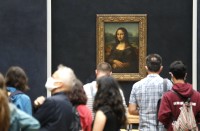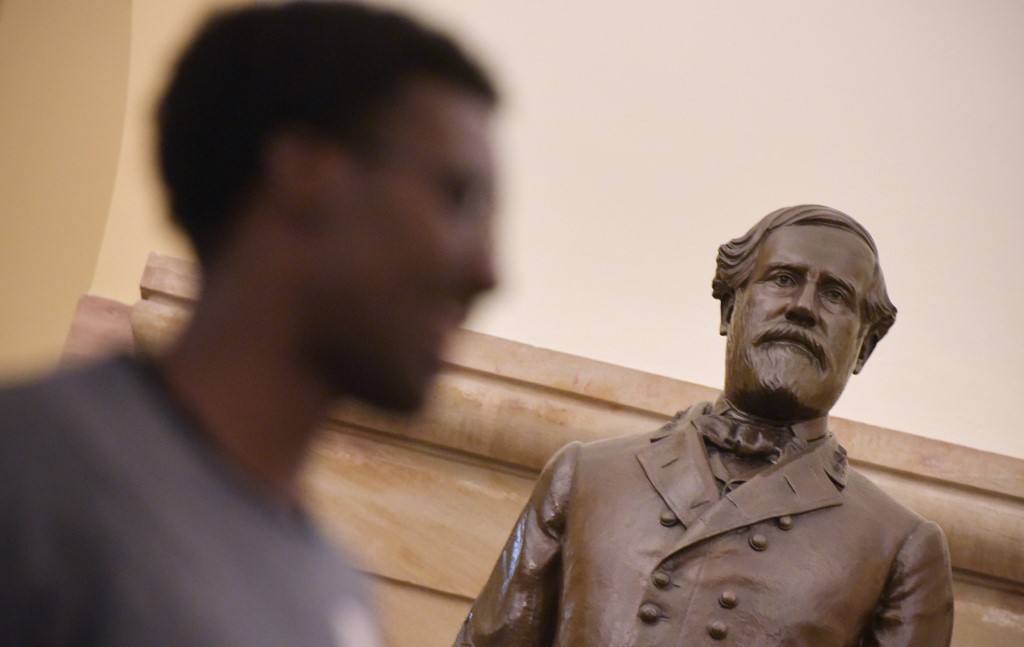
by Cyril JULIEN
Agence France-Presse
WASHINGTON D.C., United States (AFP) — As the wave of anti-racism protests rocking the United States brings down monuments to figures linked to the country’s history of slavery, the spotlight is shifting to historic characters long considered untouchable.
Although protesters initially focused on removing statues of Confederate generals, the movement has begun to turn its focus to icons of US history, including the nation’s founders Thomas Jefferson and George Washington, and President Theodore Roosevelt.
The death of George Floyd, a black man, in Minneapolis police custody on May 25 has sparked debate around statues and monuments honoring people central to the US’ slave system, some of which have been pulled down or vandalized.
The ongoing protests are “a battle over the narrative of American history in the realm of statues,” Carolyn Gallaher, a professor at American University in Washington, told AFP.
“In the South, people decided to venerate confederates. Protesters are saying, ‘No more.'”
Slavery served as the economic backbone of the American South until the end of the American Civil War (1861-1865), and has left a lasting mark on both daily culture and stereotypes and perceptions of the region.
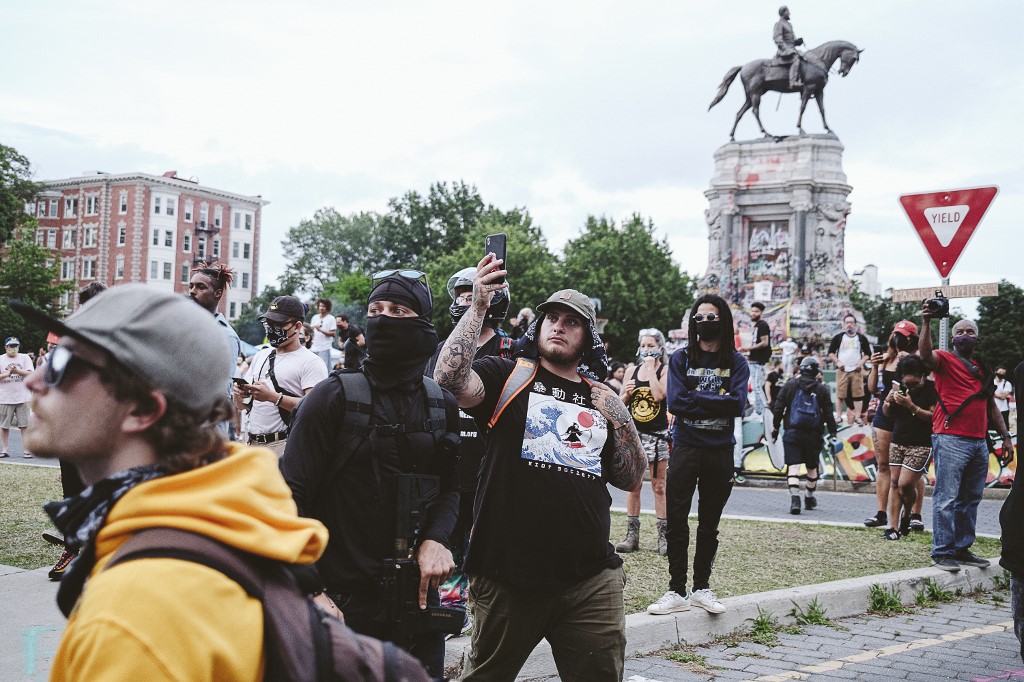
In Virginia, where some of the first English colonies were established before becoming the heart of American slave country, protesters have called for the removal of a statue of General Robert E Lee, the leader of the Confederate army.
The statue, whose pedestal has already been covered with anti-racist graffiti, has held pride of place for a century in Richmond, the Confederate capital during the Civil War.
In Washington, a statue of Confederate general Albert Pike was torn down last week.
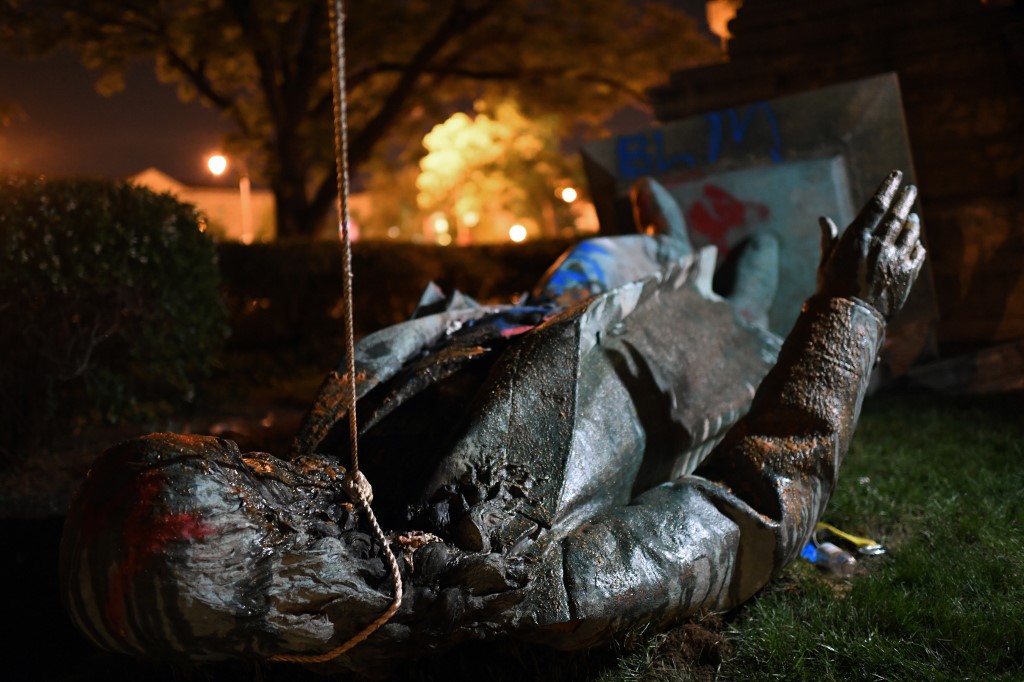
President Donald Trump tweeted that the Washington “D.C. police are not doing their job as they watch a statue be ripped down & burn. These people should be immediately arrested. A disgrace to our Country!” The images, broadcast on ABC7 News late Friday, showed the figure of Albert Pike being pulled down with rope before dozens of demonstrators started chanting “black lives matter”. (Photo by Eric BARADAT / AFP)
Increasingly, other figures who hold large places in American history are also not safe, and on Monday evening a crowd tried to topple the statue of Andrew Jackson, the seventh president, in Lafayette Park, close to the White House.
‘Hurt beyond repair’
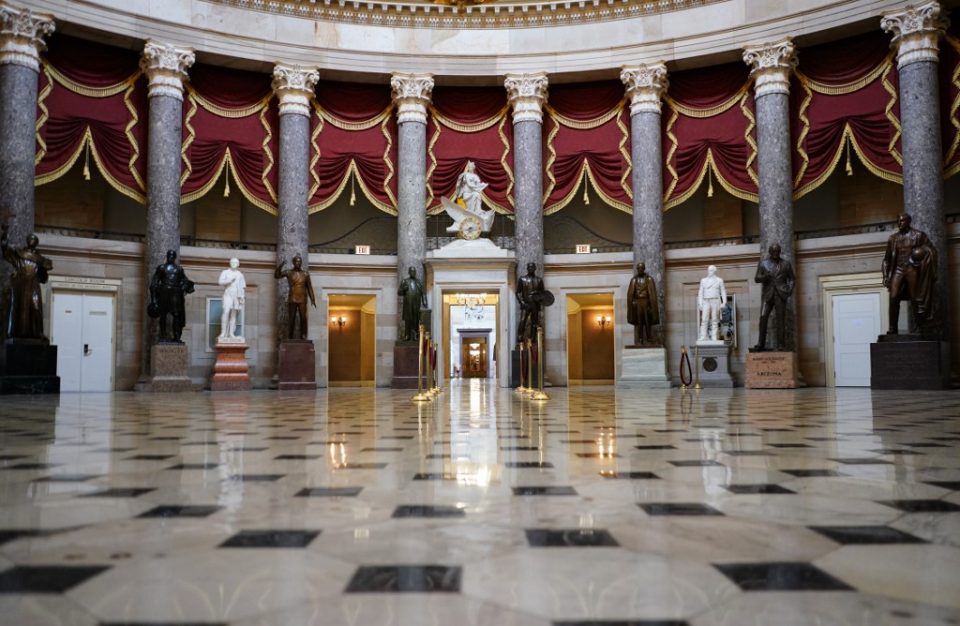
Thomas Jefferson, the third US president, has been the target of some protesters, with many statues of the leader vandalized.
Even though he was one of the authors of the Declaration of Independence, he also owned more than 600 slaves and viewed black men as inferior to white, according to the website of his Virginia plantation-turned-museum, Monticello.
“There are many statues of him that should come down,” wrote television host Shannon LaNier last week in an essay for Newsweek. LaNier is a descendant of Sally Hemings, one of Jefferson’s slaves with whom he fathered several children.
Seeing statues “of their ancestors’ slave master, a murderer, or a white supremacist” causes “hurt beyond repair” for many African Americans, LaNier wrote.
Even the nation’s father and first president, George Washington, is no longer beyond reproach: he owned 100 slaves at his Mount Vernon plantation, south of the federal capital bearing his name.
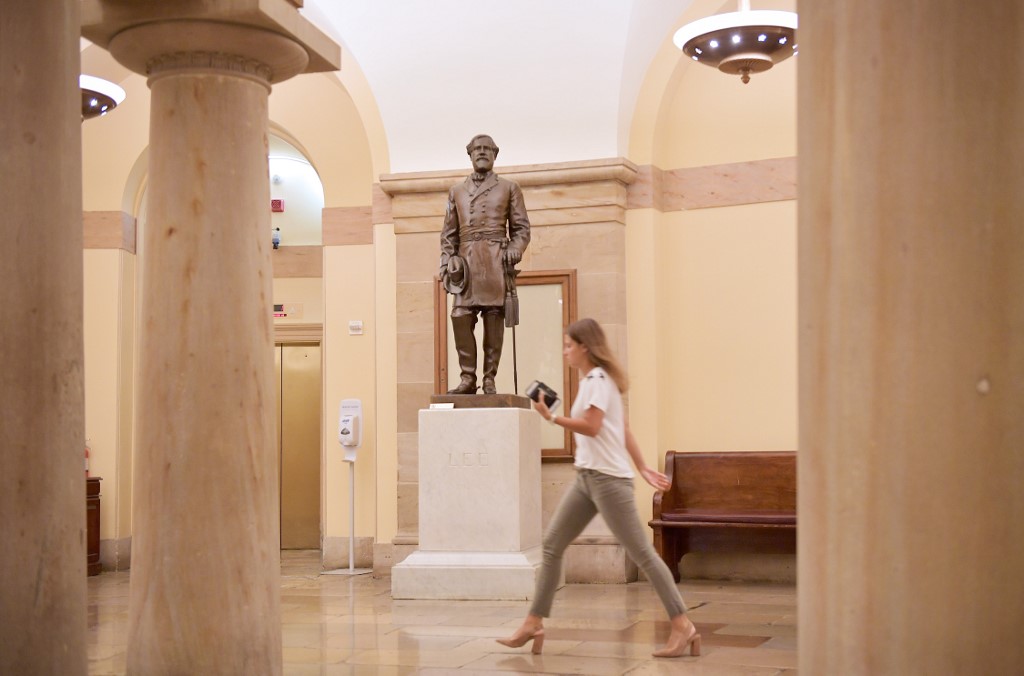
“Putting a statue in a public place, it’s a form of veneration, and many people now ask why are we venerating people who owned slaves,” said Gallaher.
In her opinion, even if the differences between Lee and the Founding Fathers are clear, “they all have slaves, and that’s what bothers people so much.”
She noted that other members of the Founding Fathers had “questioned the morality of slavery.”
History in museums
For Daniel Domingues, an associate professor of history at Rice University in Houston, any monument to Jefferson “should be contextualized with a plaque or added inscriptions.”
The city of New York opted for another route, deciding to remove a statue of the 26th president, Theodore Roosevelt, from the entrance of the American Museum of Natural History.
The move, decried by President Donald Trump, was due to the judgment that the statue represented colonialist and racist views.
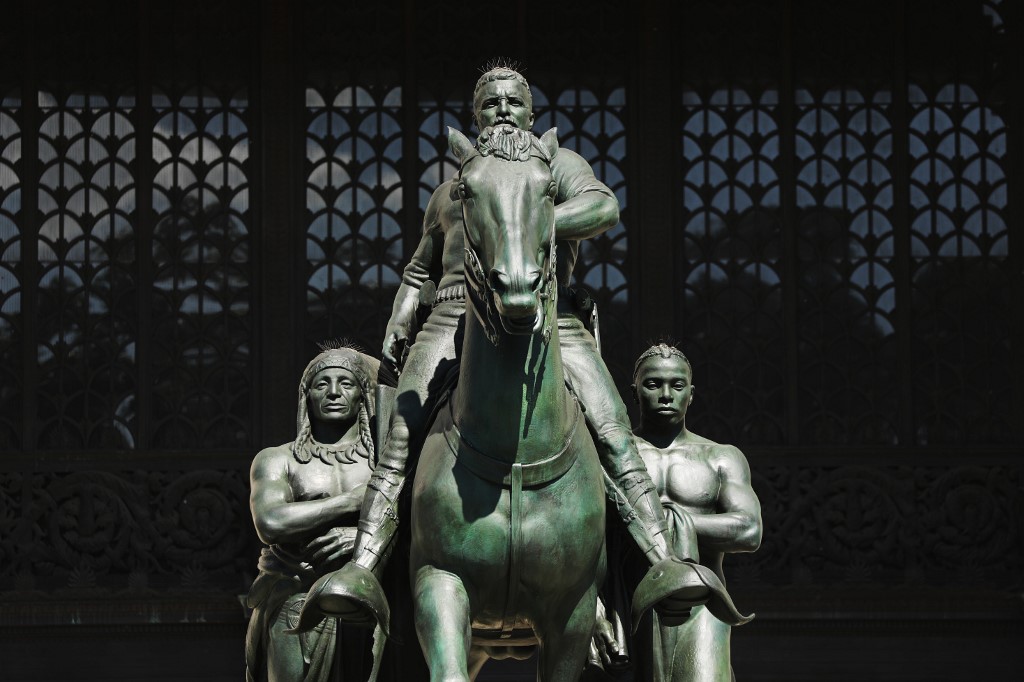
The bronze statue depicted “Teddy” Roosevelt on horseback, while a black man and a Native American walked beside him.
The museum explained Sunday that the statue “explicitly depicts Black and Indigenous people as subjugated and racially inferior.”
The website noted that Roosevelt was considered a progressive environmental defender at the start of the 20th century, but he also maintained racist opinions.
“Where do you draw the line, from Gandhi all the way to George Washington?” White House spokeswoman Kayleigh McEnany asked Monday.
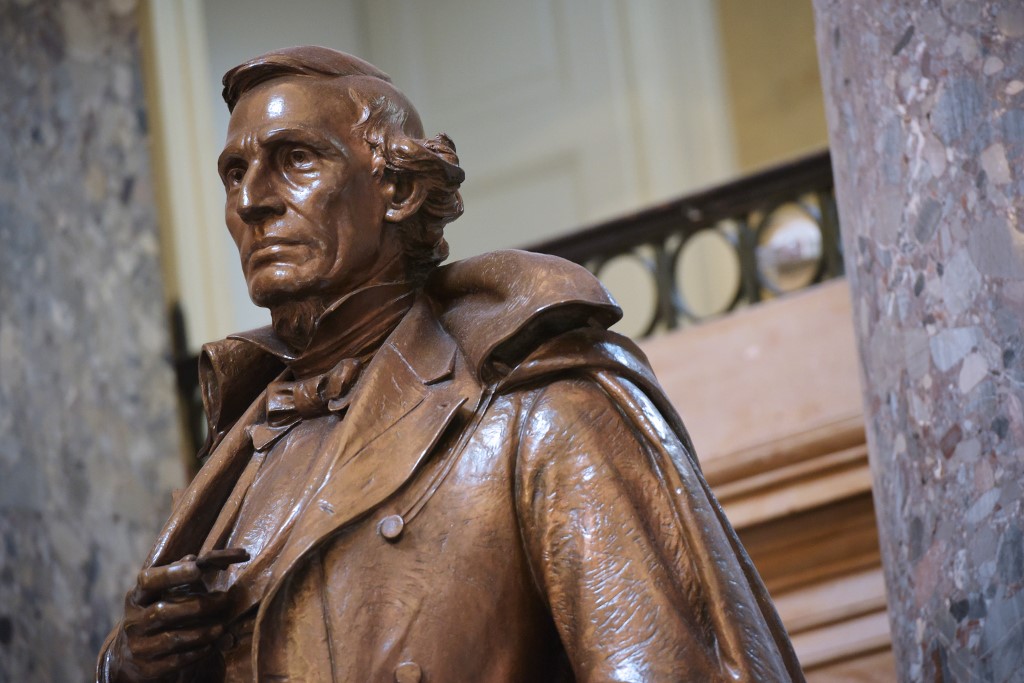
Trump has defended the Confederate monuments and said that removing them would destroy US history and culture.
But “erasing the statues is not erasing the past, it should be read as being a part of the history,” Domingues told AFP, noting that American history “is preserved in history books or museums.”
Gallaher, who grew up in Virginia, agreed: “People don’t learn their history from statues. You will learn about George Washington even if a statue is not there,” she said.
© Agence France-Presse



